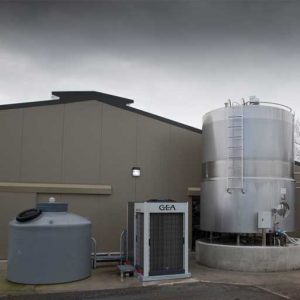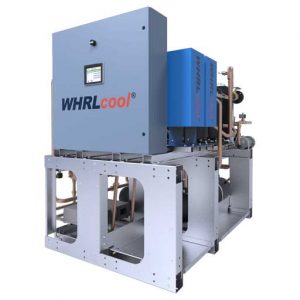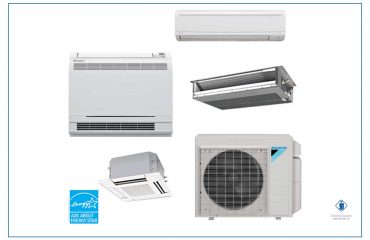Chillers have many applications in all aspects of daily life, some of which are very important in basic industries such as dairy. Dairy and milk chillers play an important role in the process of preparing and processing milk. We will first look at the proper storage temperature of milk and dairy and then the importance of the chiller in this cycle.

Suitable milk storage temperature
Different milk production processes and methods, such as pasteurization and sterilization, each have their own storage conditions. Since the sterilization temperature is much higher and the milk in this process tolerates higher heat, its storage time and temperature are longer. In this way, the milk can be stored at room temperature.
But for pasteurized milk that gets less heat, the situation is a little different and more limited. This means that the milk must be stored at a temperature of about 40 degrees Fahrenheit or 4.4 degrees Celsius or less. Otherwise, at a temperature of about 45 degrees Fahrenheit or 7 degrees Celsius, the harmful bacteria in the milk will start to work. In any case, the required storage temperature will be around 4 degrees to protect the quality of the milk.
Milk is generally stored in two general ways:
- Stored frozen (temperature below zero degrees Celsius)
- Cold storage (temperature above zero)
Raw milk is cooled after milking and reached a temperature of about 4 ° C by cooling devices. After the raw milk reaches the factory, if it is not subjected to the preparation processes, it must be cooled again and reach a temperature of 4 ° C with the help of the factory cooling devices. If the milk is frozen and below zero, all processes such as homogenization, condensation or pasteurization must be performed first. After doing this, the milk is kept at a temperature of minus -20. It is also crucial that the desired temperature is kept constant at all stages of storage, distribution, delivery and storage.
Milk storage devices and equipment in factories
Cool and air-cooled chillers for dairy and dairy factories
Air-cooled chillers used for dairy use the surrounding air to cool the production cycle processes. These chillers help you save energy, space and money. in return; Water-cooled chillers use water from an add-on source to dissipate heat from the dairy production process. A water-cooled chiller has a long life and is quieter than an air-cooled chiller.
How does a dairy chiller work?
After the milk is pumped into the cooling tanks, the chillers start working to remove the heat from the dairy products, such as the milk that was introduced to it during the production or pasteurization process. This is done not only approximately, but also with precise temperature. In this way, the chiller brings the temperature of the valve to the precise temperature that has been set for it. This set temperature is the temperature that is needed to maintain and store milk, maintain its safety and health, and maintain durability.
Some chiller systems use water and glycol for temperatures below zero. Here’s how it works:
- The chiller passes the valve through the stainless steel plates with the help of a funnel.
- The milk goes to the other side of the chiller, where a mixture of glycol and water is waiting.
- The mixture of water and glycol brings the milk to the desired low temperature.

Advantages of using a chiller in the production and storage of dairy and milk products
As you know, a chiller is an air conditioning system that addresses its application to the food industry such as dairy and milk with four general issues:
- Production of cold water required for direct production activities
- Air conditioning of production environment and humidity control
- Cooling factory equipment and machinery such as rollers
- Storage of raw materials or food produced in a special condition or disinfection of the environment, with the help of other air conditioners
But for the work mentioned above under four numbers, not only the chiller is used, but also various devices are available depending on the needs of factories and manufacturers. If the chiller has significant advantages over the rest.
One of the advantages of using a chiller in the dairy and milk industries instead of other cooling devices is optimizing energy consumption and thus spending less. The cost of operating dairy and milk chillers is as important as their initial cost. There are cost-effective solutions to this problem that minimize wasted energy and reduce operating costs with options such as variable frequency drive or VSD, EC fan motor and heat reuse And heat dissipated. With multiple refrigerant cycles or digital compressors, dairy and milk chillers become smart enough to do the right thing while doing less.
The second advantage is the efficiency and performance of the chiller. The performance of the chiller in these cases is more efficient than other devices and provides a wider and more accurate range of facilities to dairy factories.
The third advantage of the chiller is that it will have better temperature control. In the dairy and milk industries, as mentioned, production and storage temperatures are very important. In addition to reaching a certain temperature and performing processes in it, after production, a temperature must be maintained, especially in all stages of storage until consumption. For example, an ice bank is used for the food industry, but an ice bank cannot accurately regulate the temperature of a chiller. In fact, the inlet temperature for this device is not exactly the desired chiller inlet temperature.
Also, the large industrial chillers intended for dairies are designed to reach a specific temperature at one time, without the need for storage tanks and repeat routing. This helps to shorten the cooling time and increase the shelf life of the milk.
as a result,
- No storage tank required
- Cooling time is shorter
- Increases the life and durability of milk
In addition, easy maintenance of chiller equipment can be mentioned as an advantage. It can be assumed that you as any business owner; Your head is busy managing and operating your equipment. That’s why we offer you a chiller that is easy to clean, has replaceable parts that make even the largest dairies work in a short time.
Finally, three reasons to choose an industrial chiller for the dairy and milk industries:
Strong performance
Standard chillers do not have the industrial grade and mechanisms needed to perform high capacities.
More accurate temperature control
The standard chiller is not designed to be as accurate as an industrial chiller in determining the temperature that the dairy and milk industry needs.
Active all year round
For consistent and reliable operation, a standard chiller cannot withstand the same level as industrial chillers. These chillers may do well in the warm seasons, but they can not continue to operate at the same power in the cold seasons.

 English
English  فارسی
فارسی 



